Myasthenia gravis (MG) is an autoimmune disease characterized by ptosis, fatigue, and muscle weakness, caused by the association of pathogenic autoantibodies with postsynaptic membrane proteins at neuromuscular junctions. Eighty percent to 90% of cases are mediated by antibodies directed against the acetylcholine receptor (AChR).
GemPharmatech has developed two disease models: the AchRα97-116 induced experimental autoimmune myasthenia gravis (EAMG) and the MG patient derived PBLs NCG mouse model to help meet your MG research needs.
AChRα97-116 induced EAMG Models
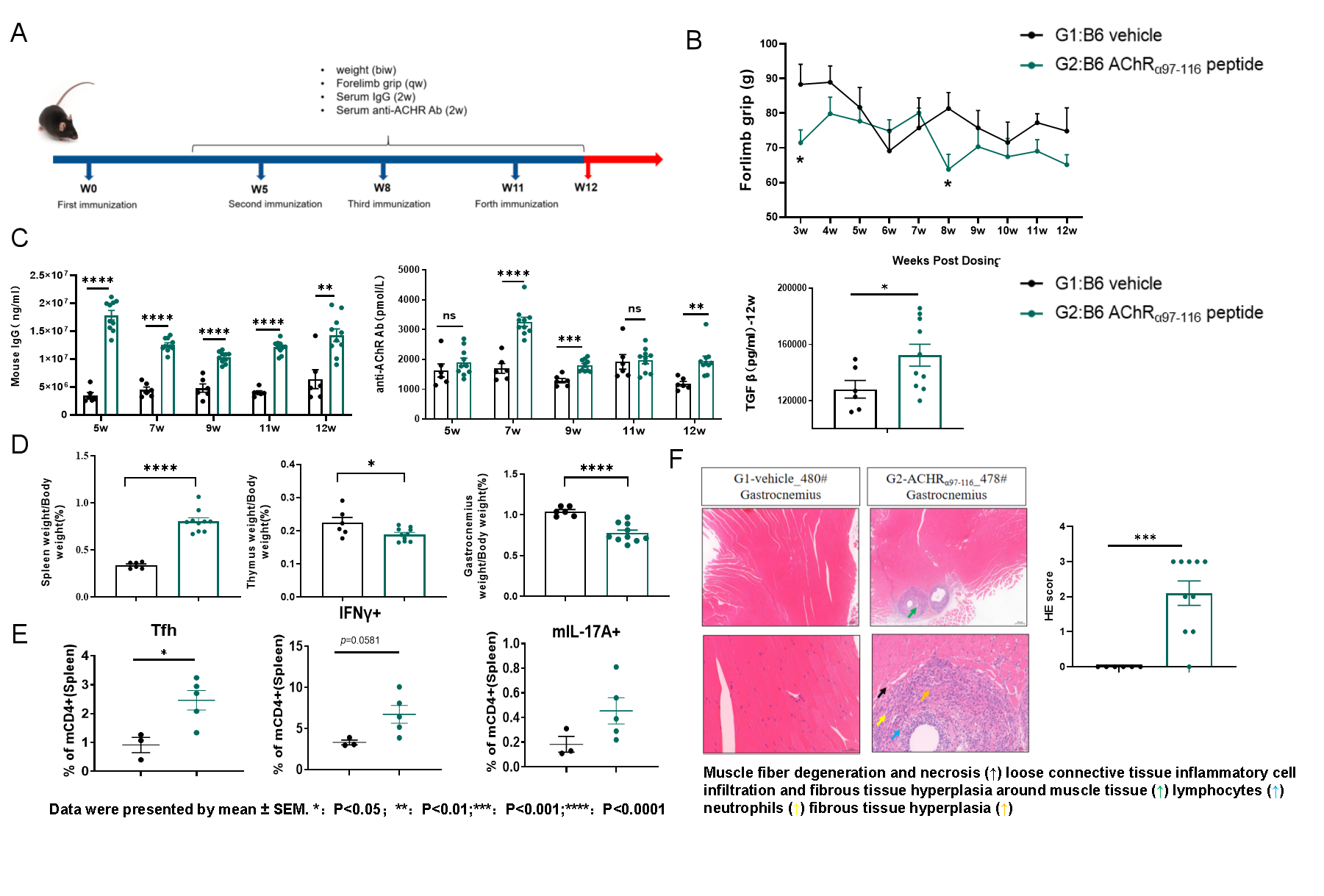
Fig.1 AChRα97-116 induced mouse EAMG model
The AChRα97-116 induced model strategy is shown in Fig.1A. Animals were challenged with the AChRα97-116 peptide at 0, 5, 8 and 11 weeks, and forelimb grip were monitored. Results indicate that forelimb grip was decreased in the model group (Fig.1B). Furthermore, the levels of mouse IgG and anti-AChR antibody in the serum increased in model group starting from 5w to 12w after induction, with cytokine level of TNF-α in the serum also demonstrating an increase in the model group (Fig.1C). The spleen weight index increased; thymus and gastrocnemius muscle weight index decreased obviously in model group (Fig.1D). The percentage of Tfh cell、IFN-γsecreted CD4+T cell and IL-17A secreted CD4+T cell of spleen in modeling group mice also increased (Fig.1E).The HE score of the gastrocnemius muscle in model group was significantly increased (Fig.1F).

Fig.2 Efficacy valuation of Fenebrutinib in AChRα97-116 induced mouse EAMG model
Efficacy valuation of Fenebrutinib in AChRα97-116 induced model strategy is shown in Fig.1A. The level of mouse IgG in the serum increased in model group starting from 6w to 12w post inducton and was alleviated following Fenebrutinib treatment (Fig.1B). The percentage of IFN-γand IL-17A secreted CD4+T cell of spleen in model group mice also exhibited a decrease in the Fenebrutinib treated group (Fig.1C).
Patient derived PBL-NCG MG Model
Strategy of model generation
Peripheral blood lymphocytes (PBLs) derived from MG patients were infused into NCG (strain No.T001475) mice to generate a MG disease model.
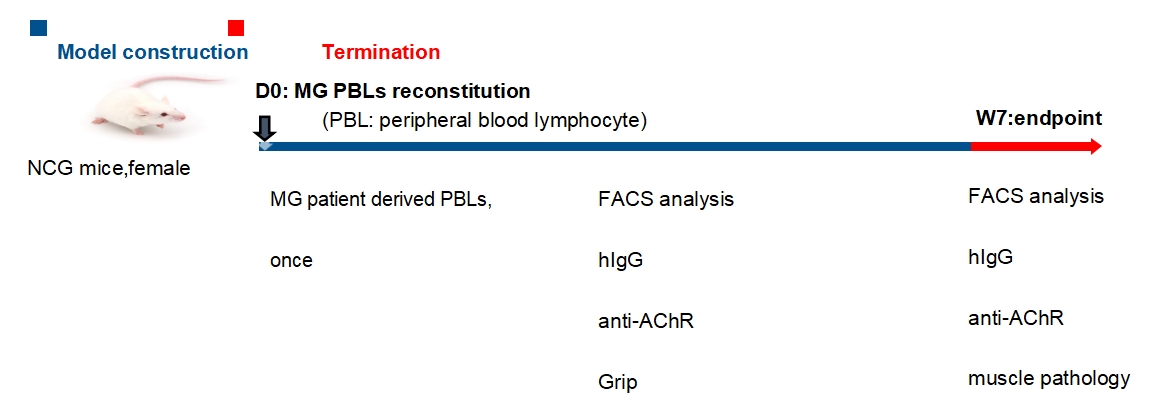
Igs levels in serum

The level of anti-human AChR antibody and human IgG in the serum increased in model group G2.
Limb grip test and pathohistological study
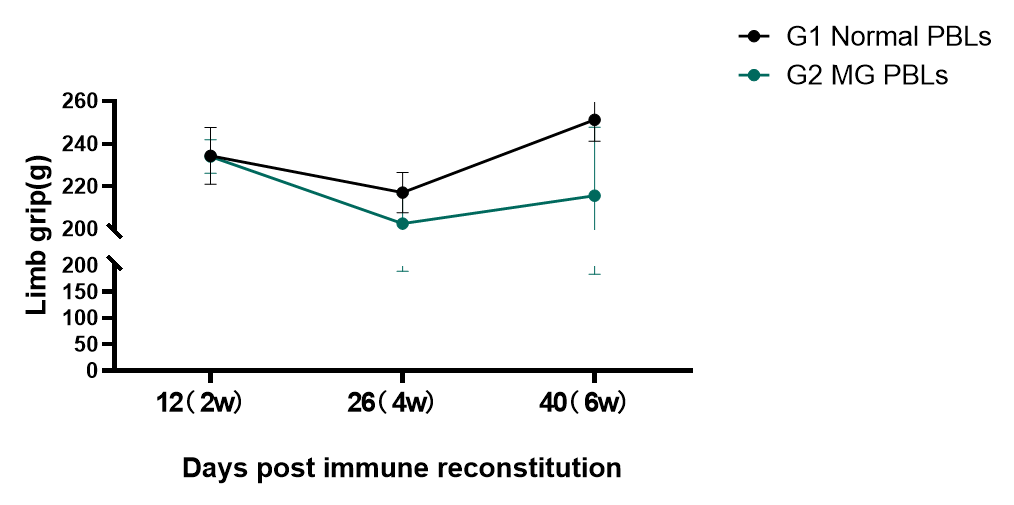
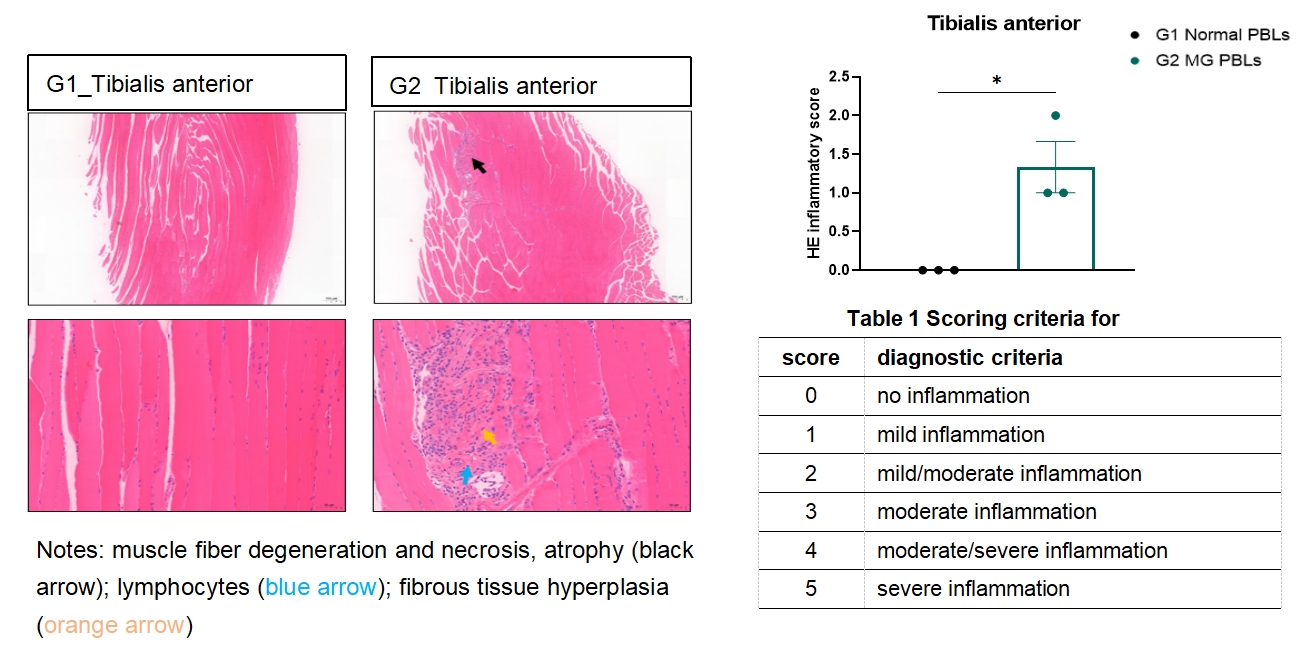
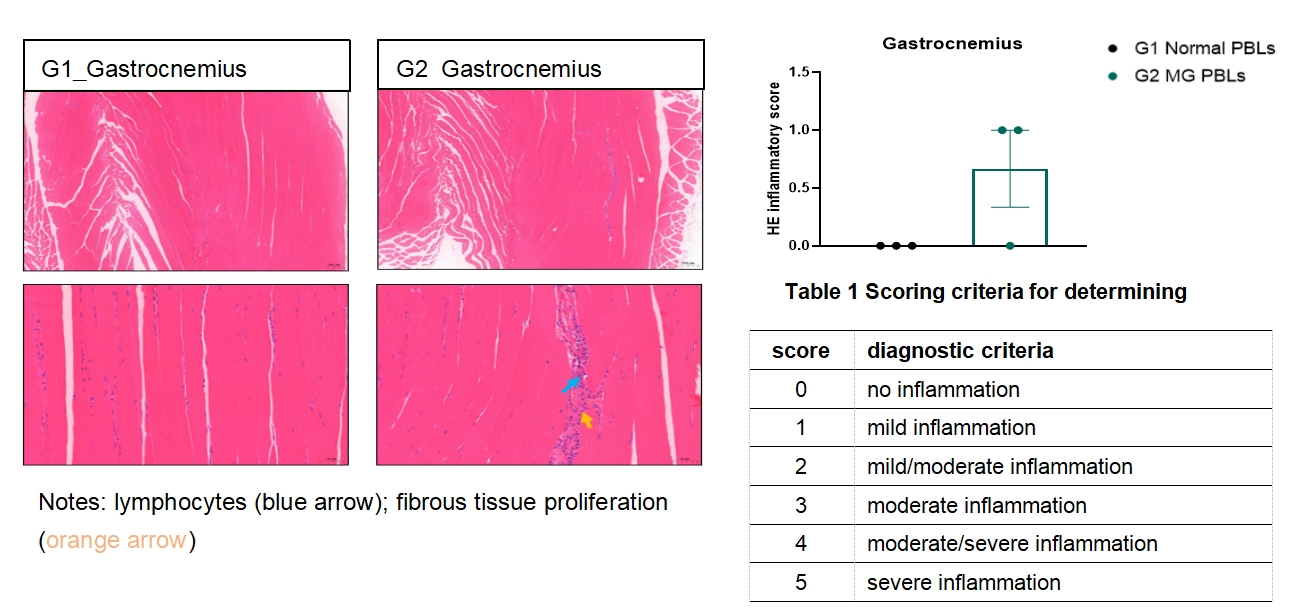
A decrease in limb grip was observed with a corresponding increase in the HE score of Tibialis anterior and gastrocnemius muscle within the model group.

